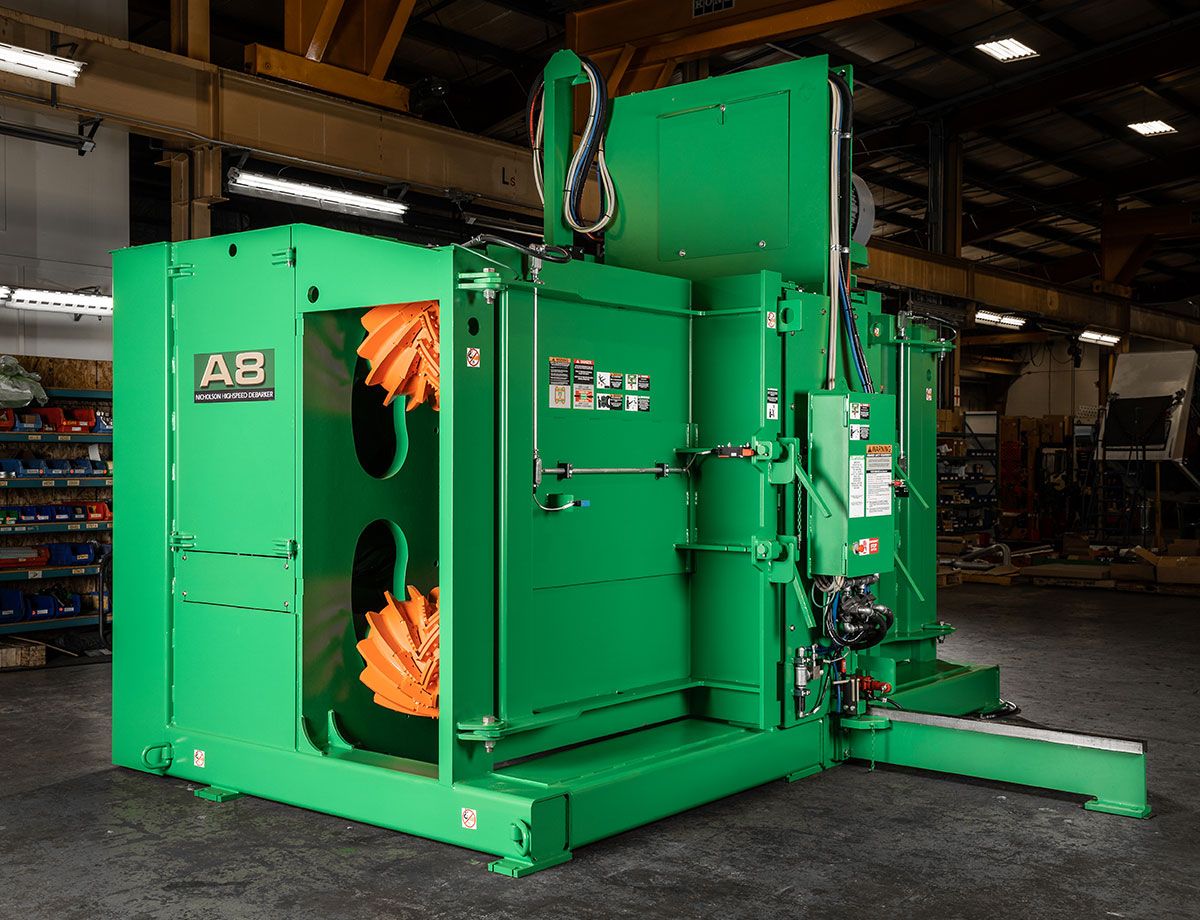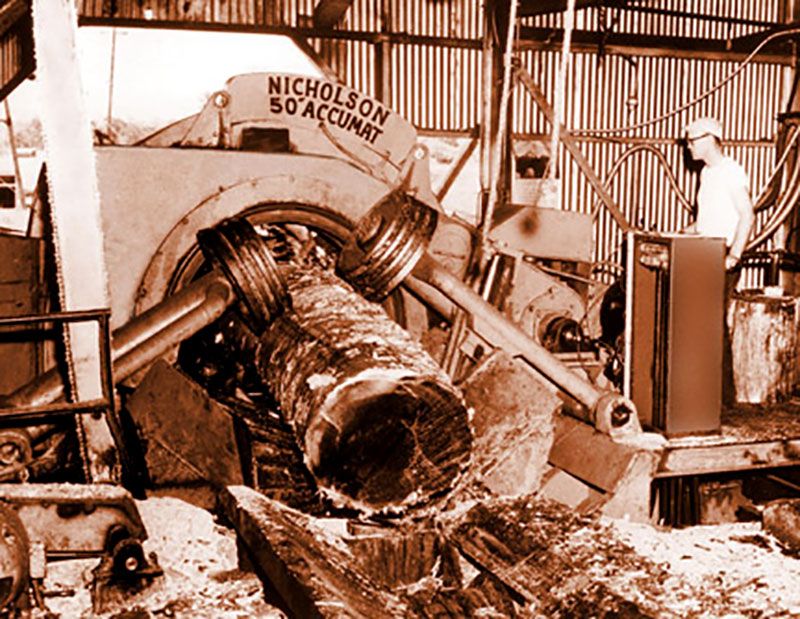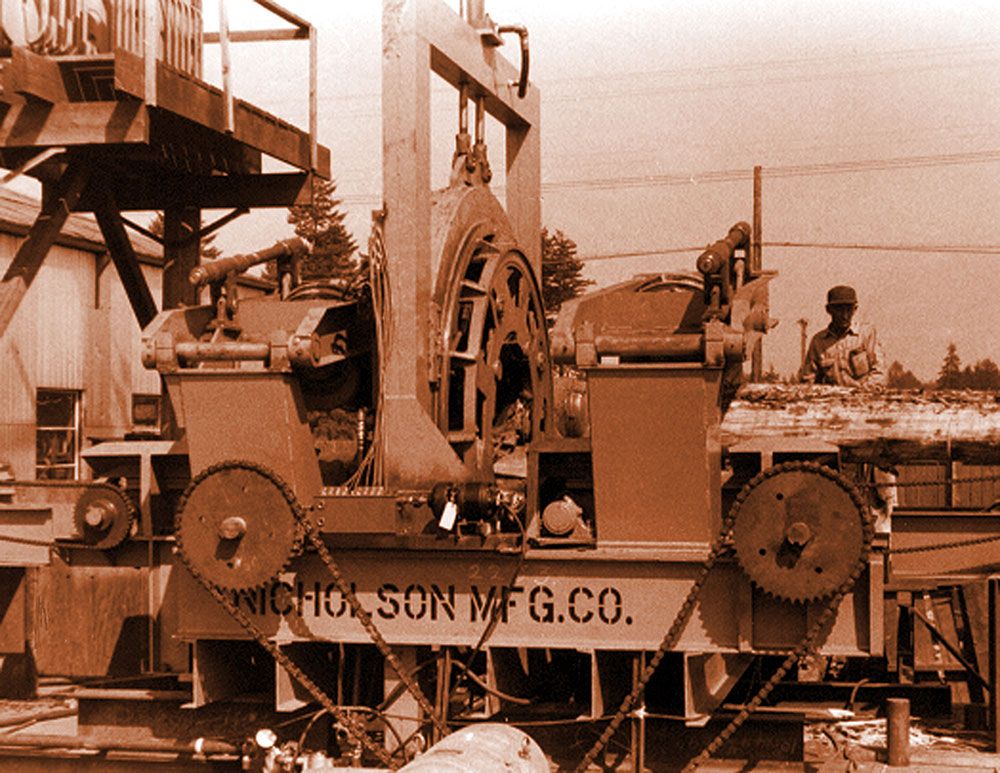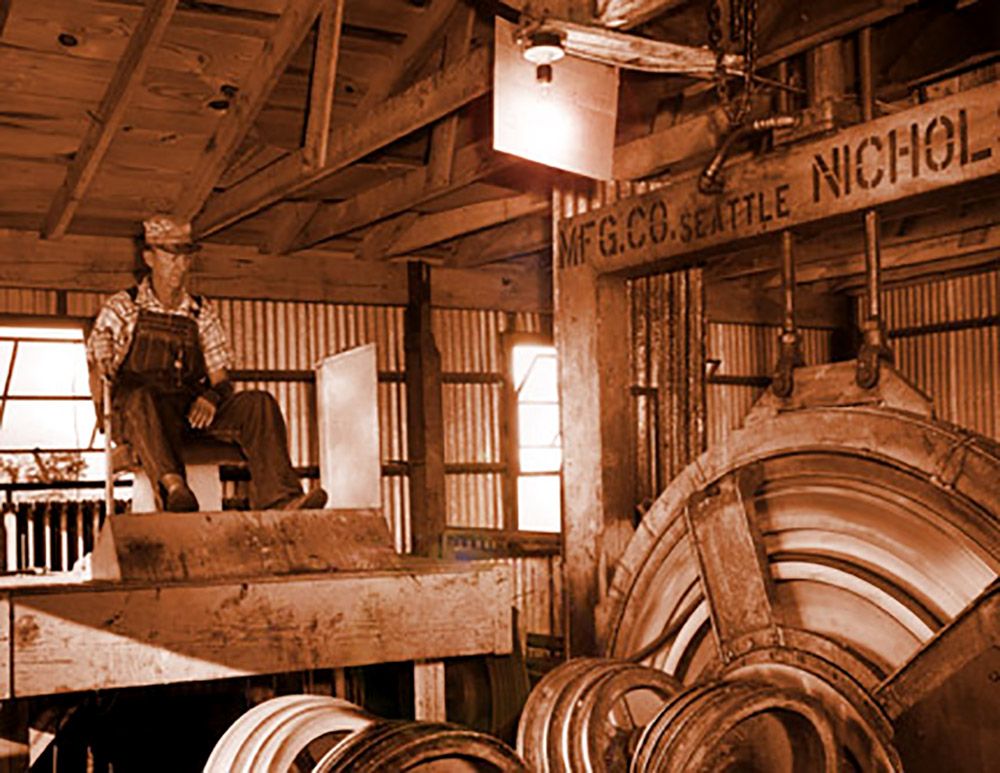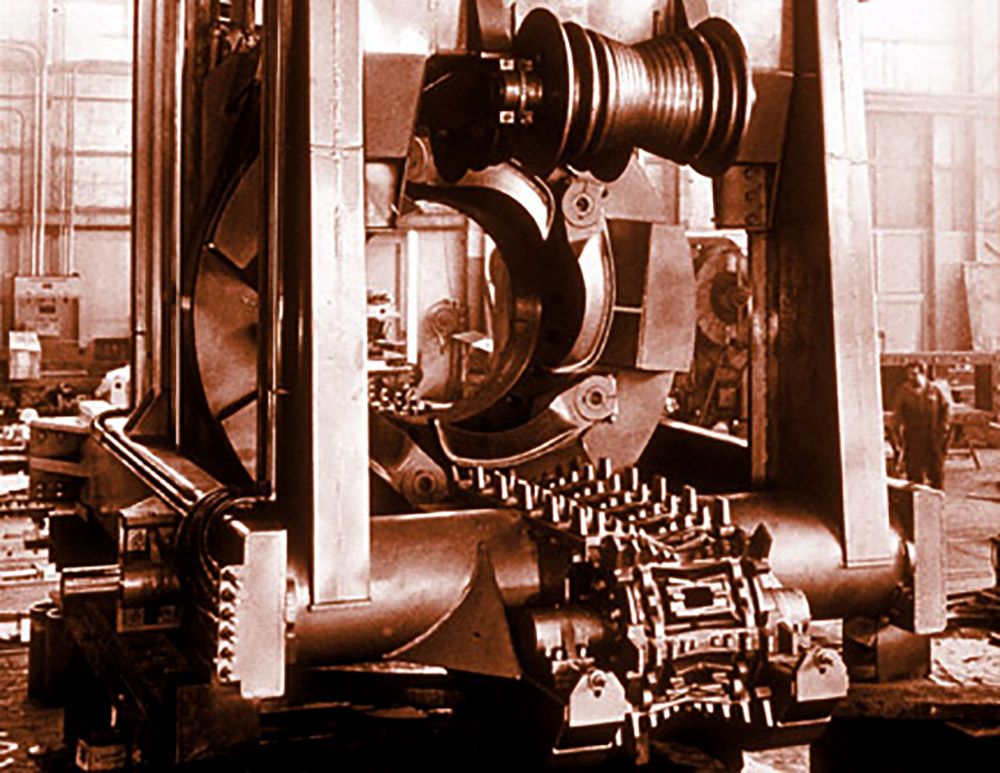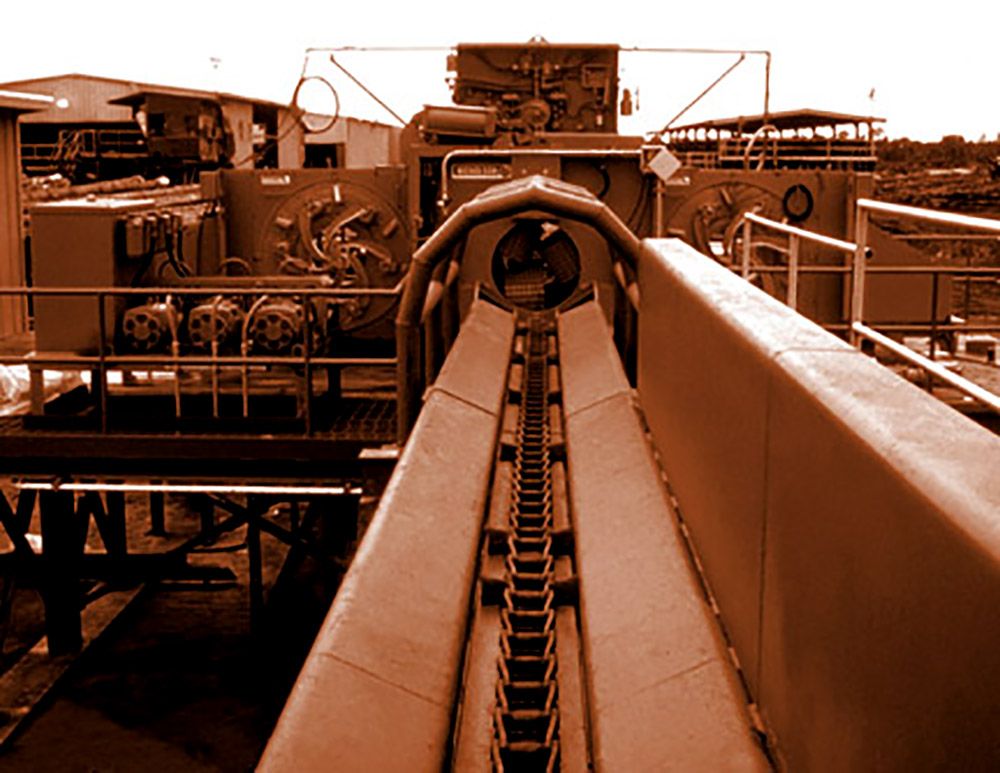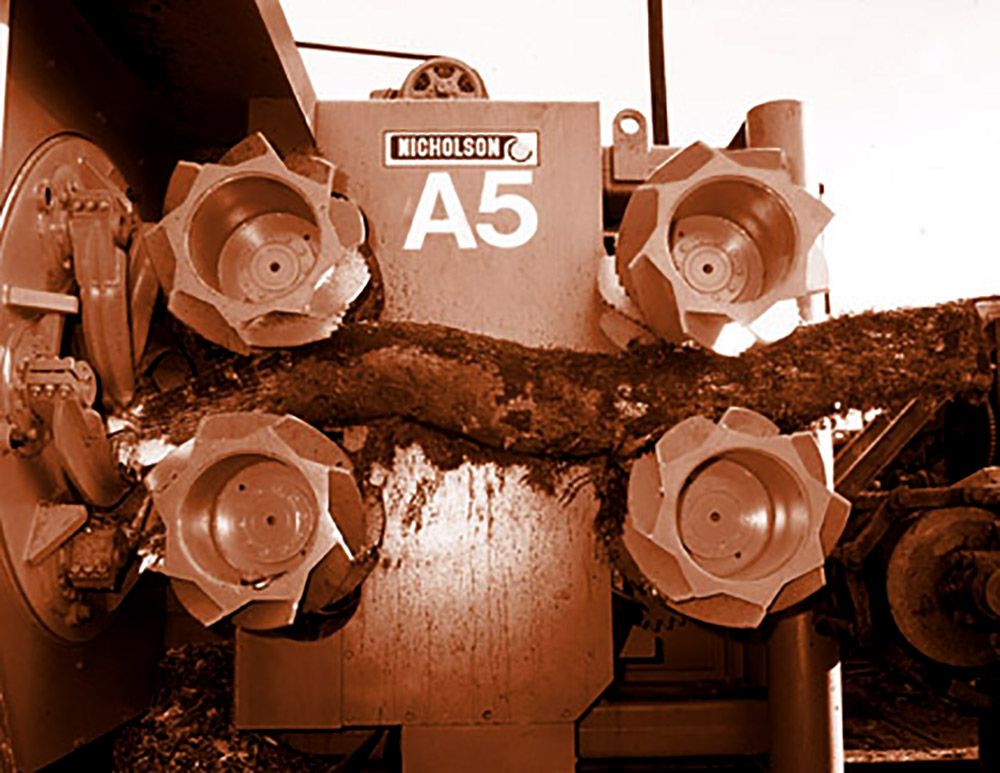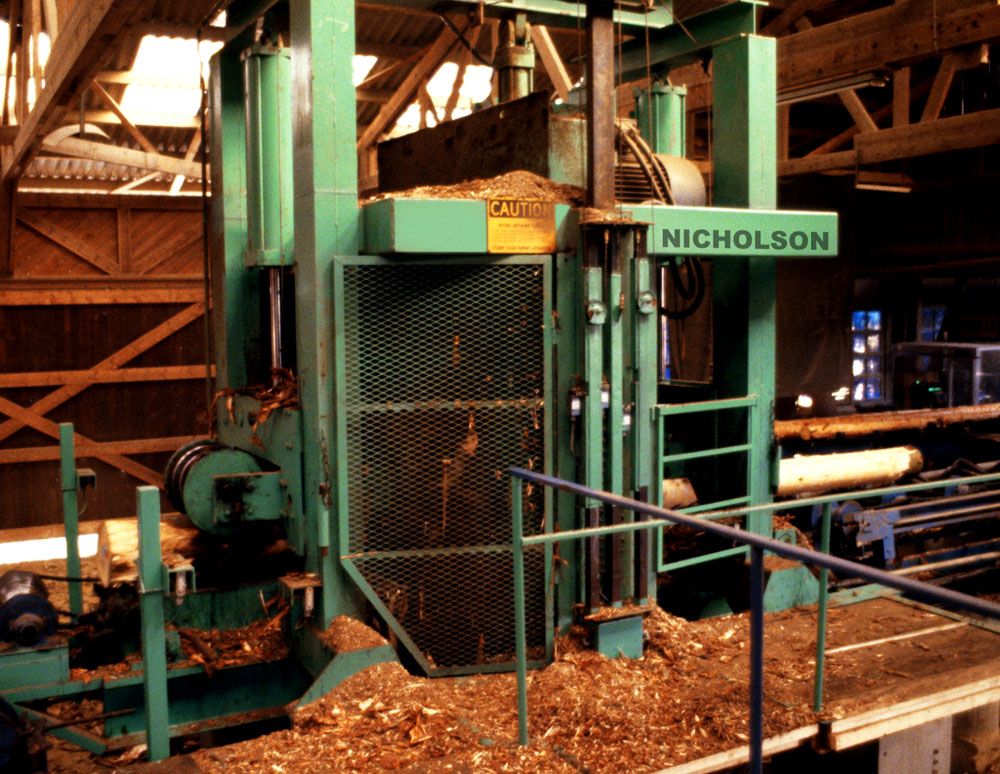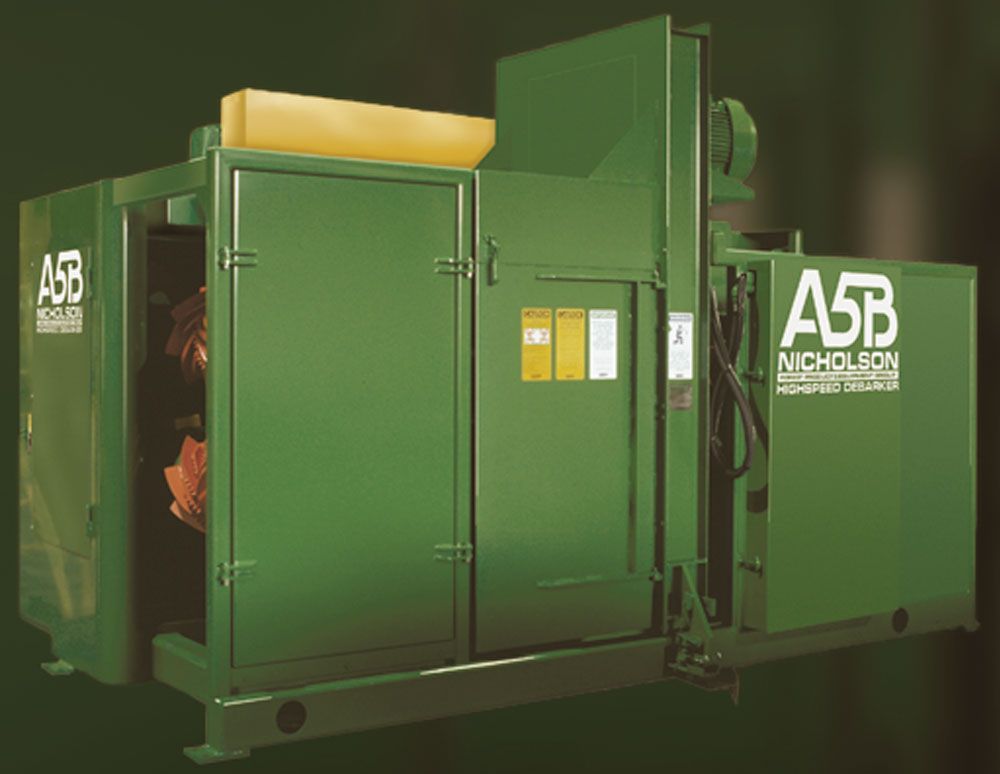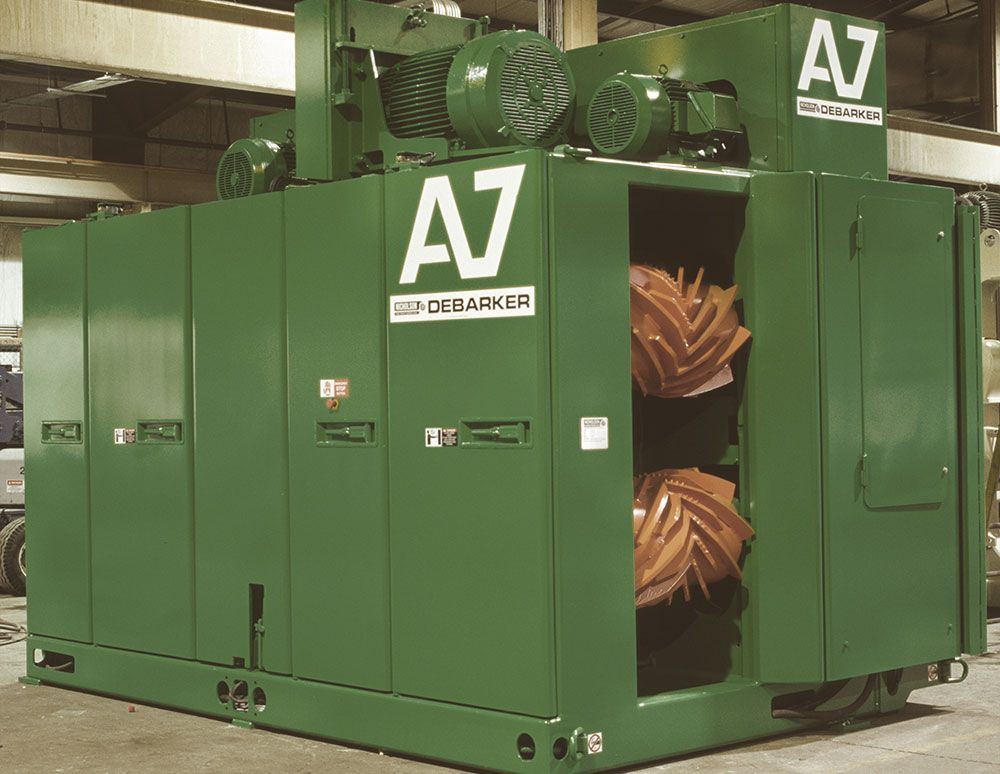Our Story
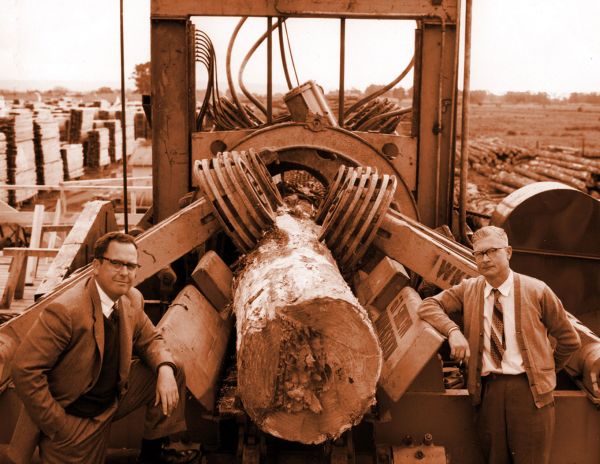
A legacy of designing and building the best equipment available
History & Culture
Prior to Nicholson’s ring debarking innovation, bark removal was a slow, expensive process. Often done by hand, with a tool called a debarking spud, logs up to 16 feet in diameter, with bark up to 14 inches thick, made manual debarking back-breaking work. The other common way of removing bark was to cut slabs off the log to get a square cant. The downside of this technique was that the four slabs removed from each log potentially contained up to a third of the most valuable wood fiber.
In the last years of the 1940s Bill Nicholson responded to this challenge and the needs of the forest industry by designing and building a variety of lathe and rosser head style log debarkers. In 1951 he built his first whole log mechanical ring type debarker based on the principle of cambium shear. The technology of feeding a non-rotating log through a multi-tool rotating ring proved to be a practical, highly effective method of removing bark. Early feed speeds of 80 to 100 feet per minute have now progressed to current processing speeds in excess of 650 feet per minute, utilizing the same basic principles but incorporating leading-edge technology.
Nicholson’s products have evolved over the years but one thing has not changed – our commitment to building the best equipment available.
